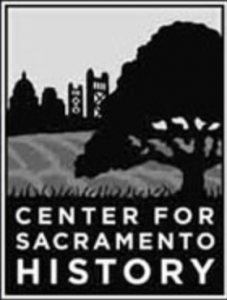This post is written by guest writer, Emily Mizokami
It was all-hands-on-deck at the Center for Sacramento History (CSH) last month. All the archivists, the city historian and curator were heading over to city hall and asked me, their student assistant, to tag along. I was surprised when I was told that all city departments were reporting to the city council that day to plead their case for why they should continue receiving their portion of the city’s budgetary pie. Sacramento is $50 million in the hole and the cuts to this year’s budget have to come from somewhere.

Whether MLIS students go on to work at archives for a city, county, university or museum, at some point they will be part of a team that develops or executes a strategic plan for their institution’s survival. Coincidentally, the SAASC recently hosted Dr. Jessica Bushey , in its “Ask an Archivist” series, who discussed the importance of advocating for archives. Bushey, a San Jose State University professor and former archivist at two museums, stressed that most boards, councils, and donors do not know what archivists do:
“I think if there is, you know, one discipline that seems to be oddly misunderstood, it is definitely the discipline of archives,” said Bushey. “I know a lot of archivists who really prefer the quiet work of archives and while I love that, if you’re the only archivist . . .you’re the only one there to make that plea and to try and get people interested in what you’re doing and then fund you, it’s all about getting funding right?”
And funding is exactly what every Sacramento City department was vying for in those packed chambers last month. CSH is under the umbrella of Conventions and Cultural Services and this division’s economy manager, Megan Van Voorhis, made the center’s impassioned plea to the council. She spoke with knowledge and passion as she described what CSH does for the city.
“(CSH) helps us understand why we are here; how we got here,” said Van Voorhis. She detailed the center’s housing of 30,000 artifacts dating back to 1849, outreach programs such as the yearly Archives Crawl, and programs with the city’s school children.
“People look to museums and historic sites . . . they’re the ones that have the highest levels of trust,” Van Voorhis continued.
The council and spectators appeared to be moved as Van Voorhis received two rounds of applause.
City councilmember Karina Talamentes who visited CSH previously commented, “It’s incredible! It’s like Disneyland for anyone that’s into history.”
Vice mayor Caity Maple, who happily anticipates the CSH curator’s frequent rotation of artwork at city hall, added, “I’ve read letters (at CSH) from the city manager in the 1920s . . .and I learned from them. . .because if we don’t know our history, we are doomed to repeat it.”
Not all archives will be lucky enough to have the backing of a staff and well-spoken economy manager who appreciates their institution. That is where a background in marketing, public speaking, or advertising will be beneficial and perhaps the key to securing funding for the ever-elusive archives at which an MLIS student may work, according to Bushey.
Bushey emphasized, “The more that you can talk about the archives and archival work and have it linked to the mission and the goals of the larger organization, the more successful you will be.”
Emily Mizokami is in her first year as an MLIS student at San Jose State University and works part time at the Center for Sacramento History. She is looking forward to a career in archives and hopes to make advancements in the areas of global warming preparedness and cultural reparations.
*Images courtesy of the Center for Sacramento History
Want to write for us? E-mail sjsusaasc@gmail.com